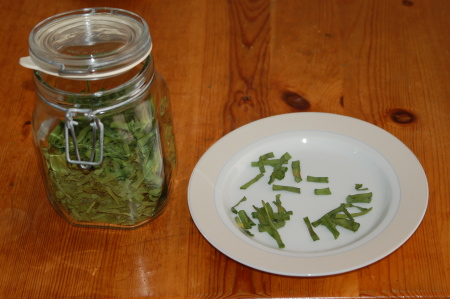In a post a few weeks ago I proposed a Food Growing Bloggers Get-Together in the UK.
So far roughly 23 people, either publicly in comments or privately in email, have expressed an interest in coming (some of them very tentatively). It seems like every few days another person pops up, so I would say this number is likely to grow. I’m guessing that even if a few people on the current list drop out, more people will emerge, and around 20-30 people will come in the end.
It should make for a nice get-together!
So Far
It seems like Oxford, Berkshire or somewhere nearby is a good location for most people.
Saturday is better than Sunday for most people.
No one has expressed a preference for a particular date, so I suggest we plan for 20 September.
There seems to be a lot of interest in organizing a symposium.
Most people seem okay with something along the lines of a picnic or barbecue, indoors if necessary.
We need an indoor area to use, both for presentations and for our picnic in case it rains.
A number of people would prefer to meet at or near a pub, because we don’t know each other.
Did I forget anything?
Venue
There is not complete agreement on the type of location this should be held at.
For example there are people coming with little or no affinity with flowers, and while I don’t think anyone is against flowers per se, some feel meeting at a public gardens might be a distraction from the stated purpose of a food growers get-together.
I personally am very oriented toward non-commercial plants, and meeting some place that either sold or promoted commercial plant varieties would be a distraction for me. I think there might be others that feel this way too.
I think we have to be a little careful to choose a neutral location for the main Saturday event.
If anyone is around on the Sunday following the event, I would be happy to make less formal plans for a group visit to a public garden somewhere!
There have been some suggestions of trying to use University facilities, allotment facilities or perhaps a community centre, preferably with a kitchen, loo and picnic facilities nearby for use if the weather is nice.
Can anyone help with specific suggestions of locations near where they live that might be suitable for this, together with approximate costs?
Does anyone have connections with the University at Oxford, that might allow us to make use of classroom or other facilities? I had a look at the University website, and there doesn’t seem to be any way to formally request this kind of thing, but these facilities do of course exist. This sort of thing seems to be administered at the college level.
Presentations
What would everyone like to see in terms of presentations?
Is there anyone who would like to give a presentation, perhaps about what they are growing or interested in?
I might be interested in saying something about what I am growing, and perhaps hosting a mini heirloom seed swap.
Does anyone have specific suggestions of interesting people we might invite to talk to us?
Costs
Finally, what does everyone think is a reasonable amount to ask people to pay for something like this?
It’s certainly possible to do this totally for free. We may not be able to find free indoor accommodations besides a restaurant, pub or other facility where we would likely be expected to purchase something. What do people think of this?
While we can probably find people who will come and talk to us for free, some people who give talks at events like this expect to at least have their travel costs paid, and sometimes want a honorarium.
Should we only look for people who will talk for free and pay their own travel costs, or should we collect some money for this?
Can anyone think of anything else we should collect money for and provide as part of this?
What would everyone think about paying £5-10 (or more?) per person?
Links
MustardPlaster
Spade Work
Daughter of the Soil
The plot thickens
Vegmonkey and the Mrs.
Joanna’s Food
Kitchen Garden in France
Growing Our Own
The smallest smallholding
A Blog Called Fuggles
Veg Plotting
Soilman’s Allotment Blog
My Tiny Plot
Manor Stables Veg Plot
Fluffius Muppetus




